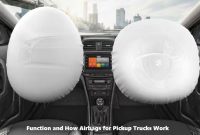Parking is a challenge for some drivers, especially in tight spaces or when parallel parking is required. A small mistake while parking can lead to scratches, bumps, and even minor accidents. To address this, various car manufacturers are introducing automatic parking feature as a practical solution for today’s drivers.

What Is Automated Parking?
Automated parking is a driving assistance system that allows a car to park itself autonomously, either parallel or perpendicular, with minimal driver intervention. This technology works with the help of ultrasonic sensors, cameras, and software that can measure parking spaces, detect obstacles around the vehicle, and automatically adjust steering direction.
In some car models, the driver only needs to control the accelerator and brake pedals, while the system adjusts the steering direction. In more advanced models, the entire parking process is handled by the system, so the driver only needs to activate the feature and monitor the process.
How Automated Parking Technology Works
Automated parking technology is increasingly popular because it offers the convenience of parking a vehicle without the need for numerous maneuvers. This feature is designed to assist drivers when parking, especially in narrow or congested areas.
But how does the automated parking system actually work? Here’s a detailed explanation.
Parking Space Detection
The first action is taken when the car starts moving slowly with the automated parking feature activated. Ultrasonic sensors and cameras installed at the front, sides, and rear of the car will scan the surrounding area for suitable parking spaces.
The system will assess whether the available space is sufficient for the size of the car. When a suitable location is found, the driver will receive a visual or audible notification via the dashboard display.
Parking Mode Selection
Once a parking space is detected, the driver is prompted to select the desired parking type, for example:
- Parallel parking
- Perpendicular parking
- Angle parking (on some models)
Next, the driver simply needs to follow the system’s instructions, such as shifting the transmission lever to a specific position or pressing the confirmation button.
Vehicle Steering Process
At this stage, the system automatically takes over steering control. Sensors and cameras work to calculate the steering angle, vehicle direction, and distance from surrounding objects.
On the other hand, some cars still require the driver to operate the accelerator and braking system directly. Meanwhile, with more advanced systems, all movements are automated, including braking and acceleration.
Positioning Improvement
Throughout the process, the system continuously adjusts the steering direction to ensure the car enters the parking space with high precision. Active sensors monitor the distance to other vehicles or obstacles and automatically stop the maneuver if a potential collision is detected.
The parking process is complete when the vehicle is in the correct position and the system confirms that the maneuver was successful.
Manual Intervention If Necessary
Although automated parking systems operate autonomously, the driver must remain alert and ready to take over at any time. If interference, misdetection, or unsuitable road conditions occur, the system will usually provide a warning to the driver to immediately take control of the vehicle manually.
Benefits
Automatic parking not only provides convenience but also improves driving safety, especially in crowded or confined spaces.
Here are some of the main advantages of using the automated parking feature:
Improved Parking Ease
For drivers who are less experienced or feel less confident parking, this feature is a practical solution. The automatic parking system helps guide the vehicle into the correct parking position, without the need for manual steering. This is especially useful when parallel parking or in tight spaces.
Reduces the Risk of Scratches and Minor Collisions
The automatic parking system utilizes sensors and cameras to accurately detect objects around the car. By calculating precise distances, the risk of the vehicle hitting walls, poles, or other cars is minimized. This feature plays a crucial role in preventing minor collisions that often occur when vehicles are parked conventionally.
Saves Time and Energy
Manual parking is often time-consuming, especially if the driver has to try several times to find the right position. With the automatic parking feature, the entire process is faster and more efficient. The driver no longer has to bother adjusting the steering wheel repeatedly.
Increasing Driving Comfort
Parking can be stressful, especially in crowded and confined spaces. Automatic features make the parking process more relaxed and controlled. This improves overall comfort for both the driver and passengers.
Increasing Vehicle Value
Cars equipped with automatic parking features typically have a higher resale value than standard models. This technology is a major draw for potential buyers seeking convenience and modern features in one package.
Supporting Surrounding Safety
In addition to avoiding collisions with other vehicles, this system also helps detect the presence of pedestrians or small objects that might be missed if only relying on the rearview mirror. This reduces the risk of accidents while parking.
From the anakrumahanidn YouTube video, tight parking is no longer a problem. This car can detect its surroundings in real time, making parking quick and easy. When parking spaces are limited, the car uses sensors to adjust.
The automatic parking feature is one example of advances in automotive technology designed to improve comfort and safety while driving. By understanding how it works and its functions, drivers can make the most of this technology. For those who often experience difficulties when parking, this feature can certainly be a reliable friend on the road. /satya



